by Eva Szwarc, studio photos by Curtis Hughes // Aug. 25, 2023
This article is part of our collaboration with Berlin Art Week.
Marianna Simnett seems to have an impressive array of light fixtures in her Siemensstadt studio; this makes sense, given that the space is based in a former light bulb factory, which is otherwise entirely empty. As the artist, smiling and well-spoken, guides us around, it becomes quickly apparent that she works across a wide range of media. Rolls of paper, which Simnett describes as “watercolour failures,” lie dormant in a corner, while elsewhere wax casts of friends’ faces are shelved until the artist can smooth out the issue of air bubbles. To one side of the studio is a work-in-progress which, she explains, will be a (online) corner shop, an offshoot of her artistic work. The shop—reminiscent of the one led by YBA artists Tracey Emin and Sarah Lucas in the 1990s—will have self-produced items including prints, t-shirts, pillows, ashtrays, candles and “boyzinbeasts” (drawings of nude males trapped in beasts). In another corner of the studio, candles are being moulded into the shape of her childhood flute.
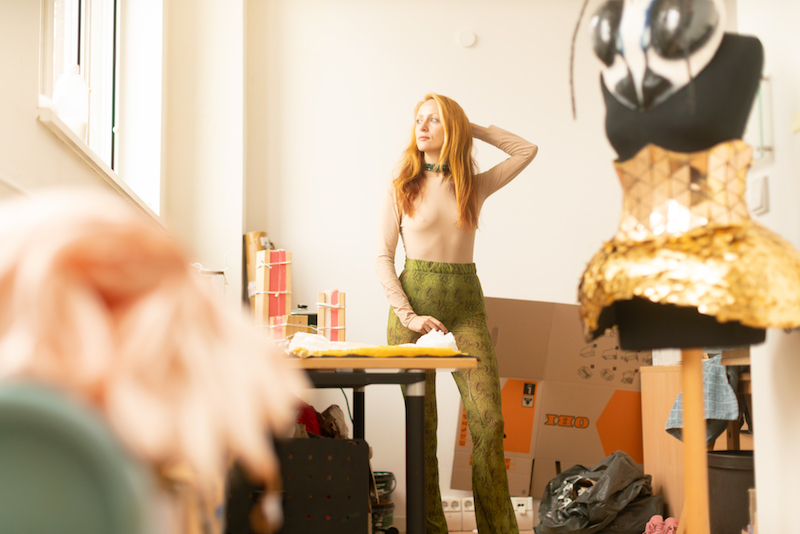
As we sit down, she tells us about her current project ‘Gorgon’ (2023). Described as a flute opera, the performance was commissioned by LAS Art Foundation and will be debuted at HAU Hebbel am Ufer (HAU2) during this year’s edition of Berlin Art Week. Those familiar with Simnett’s video installations will recognise the threading together of reimagined myth, fairy tale darkness and humour. The performance—written, composed and directed by Simnett—follows the character of Greta who, working in the windowless underbelly of a subway station at a doughnut stand, wills herself into a “new, magical, fucked up world.” There, she encounters Gorgon, a shape-shifting entity with a harrowing cry. The famous Gorgon of ancient mythology is Medusa, whose two sisters, upon hearing of her death, cry out piercingly. The goddess Athena, the troublemaker Greta springs from, was “motivated by the sisters’ crying to invent an instrument that would be as powerful as the sound of their cries,” explains Simnett. “So she invented the flute, which was not the western flute as we know it, but a very fierce, powerful reed-based instrument emitting a wail-like sound.”
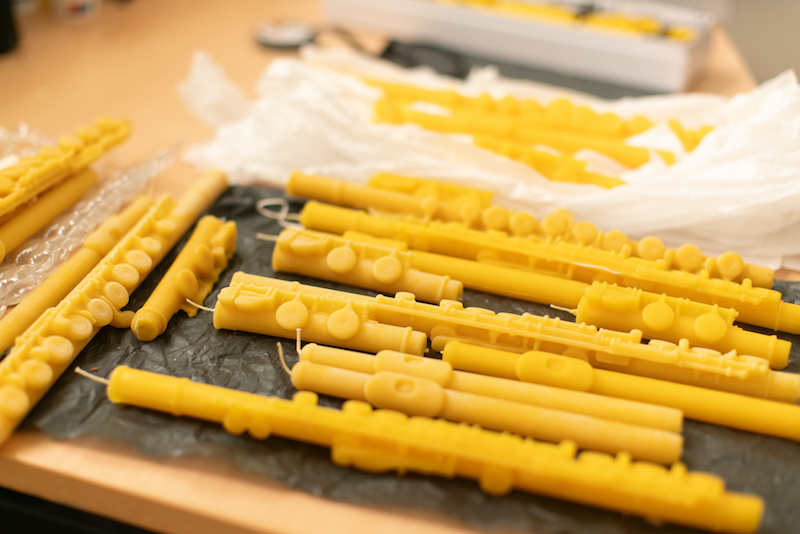
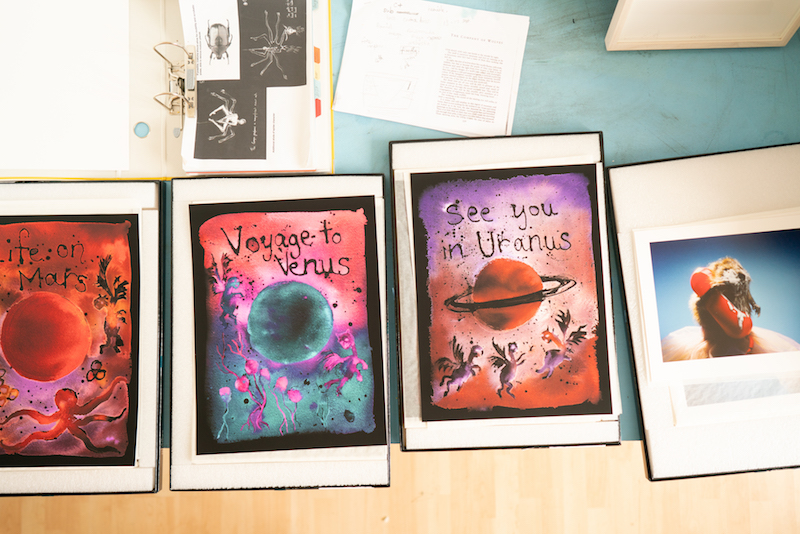
Simnett has composed a 60-minute score and written a corresponding libretto; the performance involves a cast of flour flautists and two vocal performers. The sound of the flute will be altered via an AI technology called timbre transfer, making it sound like “swarms of bees or industrial screeching or weather sounds.” AI will also be utilised to mutate the voice of Greta into those of different political leaders and to make the character of the morphing Gorgon, who will appear onstage as a projection. The technology allows a “scrambling up of chronology,” which amplifies the disorienting transformation present in much of Simnett’s work. In ‘GORGON’ mimicry is used for transformation, inspired partly by the natural world. In the studio, Simnett leafs through a folder of sketches, illustrations and images of creatures that evolved with mimicry: ant-mimicking spiders; the Caligo butterfly, whose back wings resemble the eyes of an owl; an octopus who can mutate into the shape of a flounder, a sea snake or a crab on a whim. The use of AI in Simnett’s piece explores the zeitgeist possibilities of machine learning through the lens of mimicry and the ongoing ethical debates around consent, especially in the era of ChatGPT. But also, as society is increasingly untethered from the natural world, the distortions in ‘GORGON’ point to that shared relationship becoming evermore displaced, dislodged and scrambled.
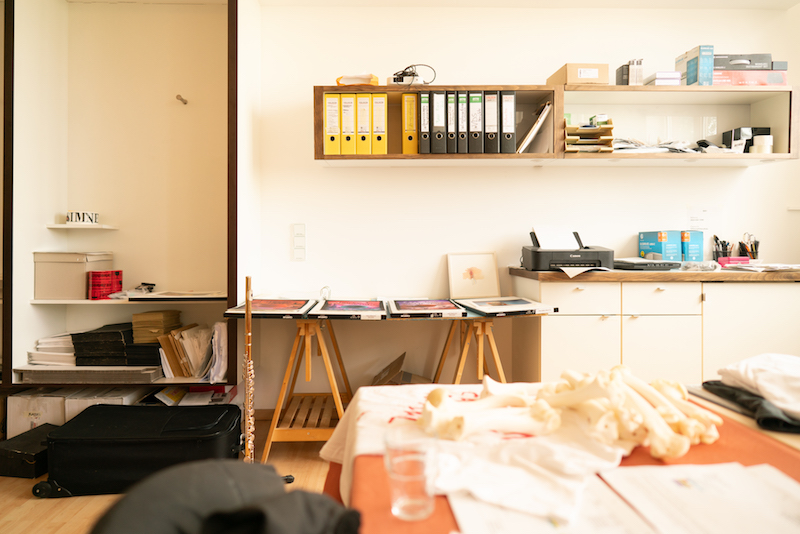
Animals often appear in Simnett’s work, surreal and humanised, crashing brilliantly together. On one wall of the studio “CAUTION ROADKILL” is scrawled on hangings in bloody, bright red, a reference to Simnett’s ‘Prayers for Roadkill’ (2022). The film installation depicts real roadkill, which Simnett and friends collected over the pandemic and the artist herself taxidermied at night, as “the stench was too unbearable for the studio team.” The creatures tail off into their own mini-stories —a fox and raccoon husband and wife re-enact their own roadkill in a sports car, a raccoon mother rocks her baby to death by mistake and a housewife is engulfed by her house that turns into a carcass. The artist attributes her interest in the non-human world to our treatment of it. It’s a relationship of care and violence that doesn’t simply oscillate between the two. As shown in the ill-fated caregiving of the racoon mother, they are insidiously and complexly intertwined. “I’m dealing with fear and trepidation,” says Simnett. “I’m working with a state of anxiety that I feel is underneath everyone’s skin.”
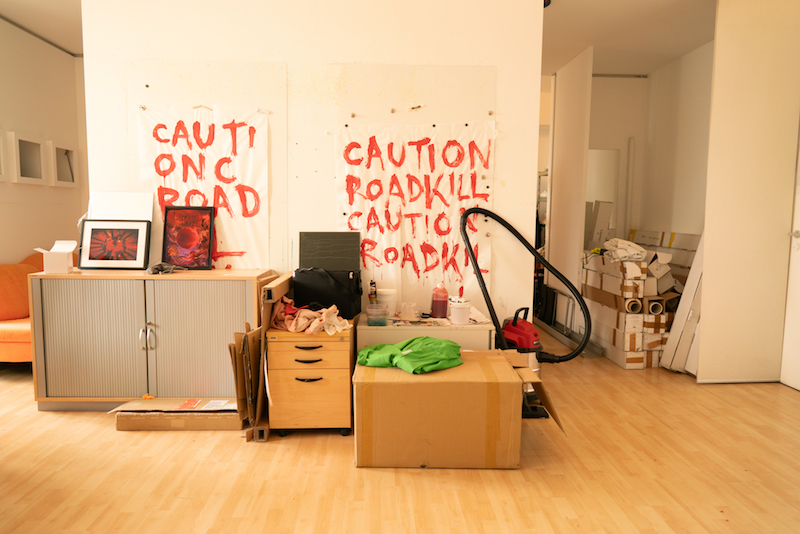
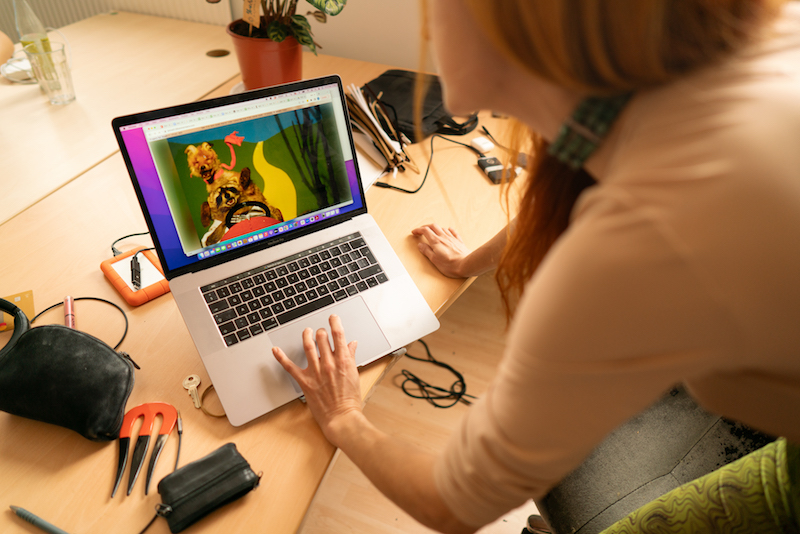
I wonder, then, if she considers the process of transformation in her work an uplifting experience. Simnett visualises this more as a kind of pressure, something that builds up in the corner one is pushed into. Transformation occurs at the place where necessity and survival go hand in hand. When pressure releases, it is sent in all directions. This possibility gives an unpredictability to the stories Simnett tells through her work. As with her use of fairy tale and myth, Simnett creates a world the viewer can recognise initially, laying familiar breadcrumbs until, far enough down the path, she can “pull the rug out” from our expectations and upend them resolutely.
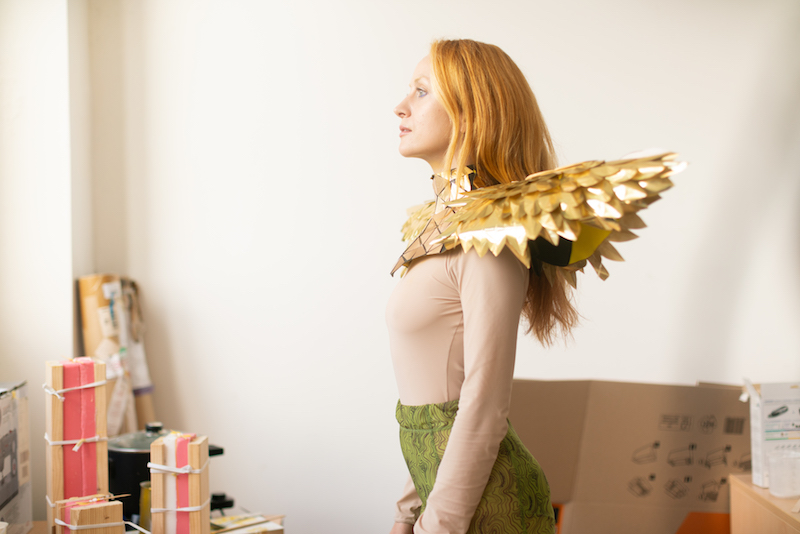
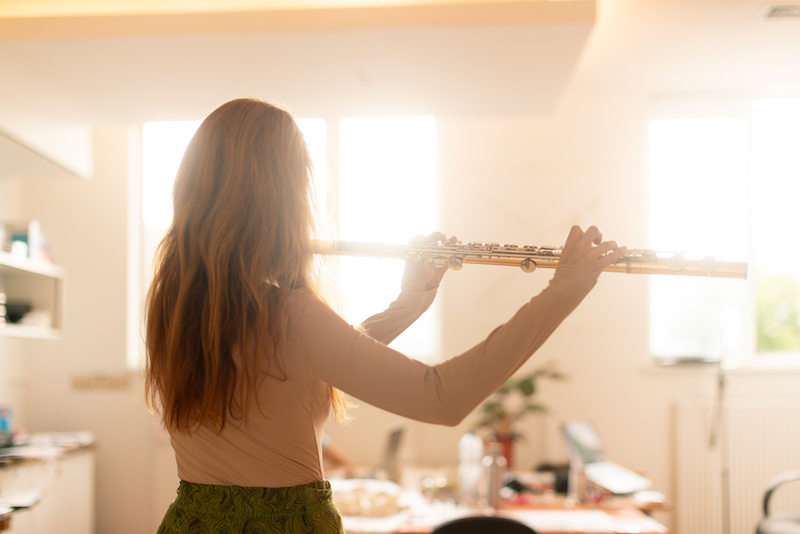
In terms of her wider artistic practice, Simnett also takes her own approach. She has a Patreon account, through which subscribers can make a monthly payment of their choice and receive regular updates from the studio and discover more about her artistic processes. “I have a lot of student subscribers,” she adds. As with her shop, Simnett is interested in operating through “new avenues away from traditional structures” and bringing community into play. In the studio, the team eats together everyday and has the simple intention of “nice energy and good humour.” A communal spirit lies at the centre of her practice. Before we leave, Simnett picks up her flute from its holder and plays for a few minutes. The notes are bright and sharp, soft and calm, and we are held together for a moment in this same spirit, transported by the sound of the instrument.
Artist Info
Exhibition Info
LAS Art Foundation
Marianna Simnett: ‘Gorgon’
Performance: Sept. 13–17, 2023
Admission: € 25 (reduced € 16)
hebbel-am-ufer.de
HAU2, Hallesches Ufer 34, 10963 Berlin, click here for map

























